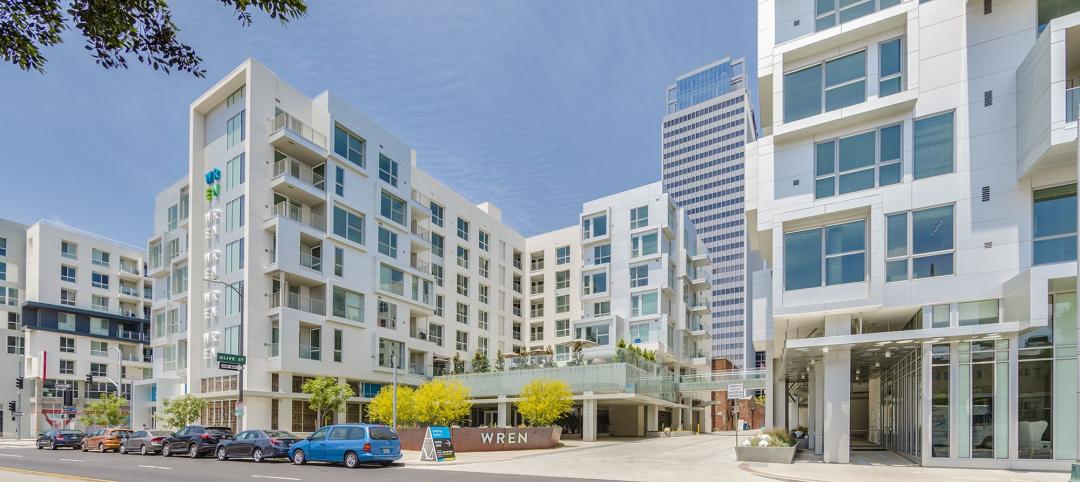Energy codes mandating more efficient use of buildings—and, by extension, of building enclosures—are already being adopted by many states as a logical step in the reduction of energy consumption.
On a national scale, the impetus to improve building energy performance is manifest in the latest and most far-reaching model energy code from the International Code Council, the 2015 International Energy Conservation Code (IECC). Compared with energy standards of just a few years earlier, the 2015 IECC sets a high benchmark for energy performance.
In 2010, the required insulative value for a new roof on an existing commercial building was R-20, per the IECC. Today, it’s R-30, a 50% increase. Replacement fixed windows in 2010 needed to perform at R-1.82. Now, that number is R-2.38, 30% greater.
This trend toward increasingly stringent energy performance standards is likely to continue. Several states and municipalities, including New York, New Jersey, and Maryland, were early adopters of the 2015 IECC. Others have already passed legislation to roll out the new, more demanding energy standards over the coming months.
For design professionals, designing and detailing building enclosures to meet these strict performance benchmarks demands knowledge not only of building envelope systems, but also of the requirements and objectives of the energy code, the fundamentals of thermodynamics and energy transfer, and high-efficiency enclosure detailing.
For property owners and facility managers, understanding the code requirements for energy-efficient design, the science behind those standards, and the process involved in achieving energy performance goals is critical to an informed and judicious approach to planning construction that meets stringent energy mandates.
After reading this article, you should be able to:
+ Balance energy use goals with practical considerations, such as constructability, performance, and product availability.
+ Apply principles of thermodynamics and energy transfer to the appropriate design of energy-efficient building enclosures.
+ Determine energy code compliance by demonstrating thermal efficiency through calculations or energy modeling.
+ Account for sites of thermal bridging by incorporating high-efficiency detailing that addresses sources of energy loss and insulates against heat transfer.
Take this free AIA CES course at BDCuniversity.com.
Related Stories
BD+C University Course | Aug 22, 2019
Lasting thermal control for building façades [AIA course]
A confluence of product innovations, creative assemblies, and improved project delivery techniques are helping improve building exterior performance and reduce first costs and long-term energy use.
BD+C University Course | Aug 1, 2019
Design and construction of cannabis facilities [AIA course]
AEC firms are rushing to fill orders for cannabis facilities in the 33 states where the sale of medical marijuana is now legal. This course is worth 1.0 AIA learning units.
BD+C University Course | Jul 12, 2019
Roofing Drainage Systems [AIA course]
While the various layers of the roof assembly play a key role in keeping moisture from infiltrating into the interior, adequate weather protection also depends on the roof’s ability to drain moisture away from the building. This course is worth 1.0 AIA LU/HSW.
BD+C University Course | Jul 8, 2019
Value engineering: Where quality meets cost control [AIA course]
This course covers the history of value engineering, the benefits it provides, and the value engineering methodology.
BD+C University Course | Jul 8, 2019
Shadow box design: To vent or not to vent [AIA course]
A curtain wall shadow box is a spandrel assembly consisting of vision glass at the building exterior and an opaque infill at the interior side of the curtain wall system. This course is worth 1.0 AIA LU/HSW.
BD+C University Course | May 30, 2019
Creating real estate value with commercial office reconstruction [AIA course]
Leading owners, developers, and project teams are employing thoughtful upgrades to older buildings to create meaningful spaces that help attract and retain top tenants—and their best people.
BD+C University Course | May 10, 2019
Designing behavioral health facilities [AIA course]
Recent gun violence, the opioid epidemic, and other social issues with significant behavioral health implications underscore the need for behavioral health facilities.
BD+C University Course | Apr 24, 2019
Sandwich cladding primer [AIA course]
Learn about the differences in design, structural integrity, and insulating capacity between various types of sandwich claddings. This AIA CES course is worth 1.0 learning units.
BD+C University Course | Apr 23, 2019
Multifamily, mid-rise buildings using wood construction [AIA course]
This AIA CES course outlines the reasons for the rising popularity of wood in multifamily buildings; reviews code compliance and fire safety considerations; and discusses techniques for successful wood building designs.
BD+C University Course | Apr 17, 2019
Urban placemaking: Building equity by design [AIA course]
The U.S. is in the midst of an urban renaissance. People are returning to cities, sparking new investment and growth.


![Meeting the demand for high-efficiency façades [AIA course] Meeting the demand for high-efficiency façades [AIA course]](/sites/default/files/AIA_BDC1217.jpg)
![Lasting thermal control for building façades [AIA course] Lasting thermal control for building façades [AIA course]](/sites/default/files/styles/list_big/public/December%202018%20AIA%20course%20facade%20insulation%20opener%20%20%281%29.jpg?itok=DV6fmNj3)
![Design and construction of cannabis facilities [AIA course] Design and construction of cannabis facilities [AIA course]](/sites/default/files/styles/list_big/public/AIAcourse.jpeg?itok=ZkXjS2TC)
![Roofing Drainage Systems [AIA course] Roofing Drainage Systems [AIA course]](/sites/default/files/styles/list_big/public/February%202019%20Roof%20Drainage%20AIA%20course.jpg?itok=RYwfJnqS)


![Creating real estate value with commercial office reconstruction [AIA Course] Creating real estate value with commercial office reconstruction [AIA Course]](/sites/default/files/styles/list_big/public/AIABDC0518_0.jpg?itok=zjrOx1W1)
![Designing behavioral health facilities [AIA course] Designing behavioral health facilities [AIA course]](/sites/default/files/styles/list_big/public/AIA_BDC0418.jpg?itok=vALIzijY)
![Sandwich cladding primer [AIA course] Sandwich cladding primer [AIA course]](/sites/default/files/styles/list_big/public/sandwich%20cladding%20course.jpg?itok=4xiFy5jk)

![Urban placemaking: Building equity by design [AIA course] Urban placemaking: Building equity by design [AIA course]](/sites/default/files/styles/list_big/public/Rudy%20Brunder%20project.jpg?itok=X0fWTMv1)




